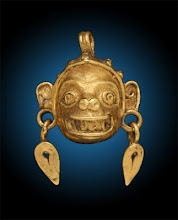It's a collection of essays by different authors on brass-related topics. A majority deals with academic music, with subjects like instrument history (sackbut, keyed trumpets, ophicleide, Baroque/Classical horn etc.), repertoire, brass pedagogy; also several essays on the topics outside of academic music. Of what I read, the essay I liked the least was the one on jazz. Best ones were essays on the rise and fall of cornetto and "Vernacular Brass Traditions".
Cornett(o) is a fascinating instrument; looks much like a recorder with a trumpet mouthpiece. It first rose to prominence in the early 16th century, together with the early trombone (AKA sackbut), and developed in tandem with it; a good amount of music was played by the cornetto/sackbut consorts, and both instruments went into a steep decline after about 200 years of prominence. However, sackbut had a rebirth and second flowering as a trombone we all know and love (or hate), and cornetto disappeared without a trace. The mystery, of course, is - why? Cornetto is claimed to be a difficult instrument, but trombone is, perhaps, even worse. It should also be not that difficult to make; there's a master in UK doing semi-pro level resin replicas for ~$200, so I am sure they could crank out some cheap ones in China...
The other article I liked is about brass bands and "vernacular" brass music around the world - which I much appreciate. The following passage I found particularly interesting:
In Jakarta, bands retaining the name by which Portuguese colonists called them — Tanjidor — play what Ernst Heins has described as "Jakarta-Chinese, and Sundanese gamelan music. .. on the instruments of the European brass band," the effect of which is a "dazzling heterophony, which defies any rule and regulation of European musical theory" This case is a particularly vivid example of a phenomenon that has become widespread in the twentieth century. Any western brass player uninformed of such practices who listens to one of these non-western brass bands could be forgiven for mistaking the sound it makes for a cacophony. In fact the players in such bands are exercising a different set of values. They may be playing western brass instruments, but the musical culture that shapes their terms of reference derives from their own indigenous roots.
A big ethno-music boom is happening nowadays; there is a multitude of small labels that seek out, unearth, or record music in rural Eastern Europe, Nigeria, Colombia, Senegal, Turkey, Thailand, and basically anywhere else, yet it seems that tanjidor is virtually unknown. Most links that turn up on Google are in Malay. There are a few scattered mentions in scholarly ethnomusicological research, but even there the 1975 article by Ernst Heins appears to be the only serious treatment of tanjidor. And the recording evidence is even more scant: I think the disc below is the only thing available. I am yet to hear it, and I really want to.


